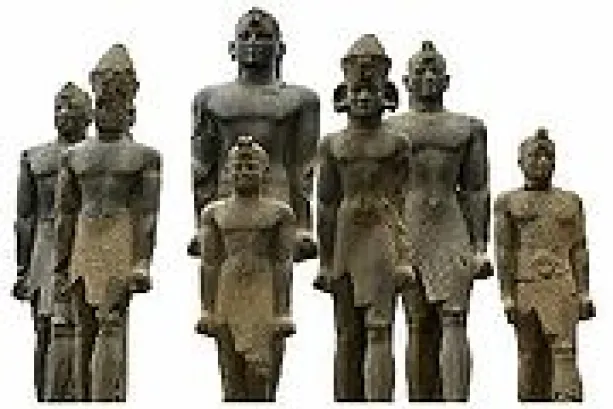The Black Pharaohs of Kush Kingdom
By: Antonia Wagura / Arab America Contributing Writer
Sudan is bordered to the North by Egypt. The black pharaohs were from Sudan: they intended to rule Egypt. However, they only ruled for 91 years before the kings, you commonly hear about, took charge.
Who were the Black Pharaohs?
Three thousand years ago, a powerful kingdom in the 9th century came into existence in Northern Sudan.
The kings ruled the Nile valley from the Mediterranean to Khartoum for half a century. The kingdom was referred to as the Kush kingdom.
The 25th Dynasty that ruled Egypt was a line of Pharaohs who originated from the Kush kingdom. The Kush Kingdom in present-day Northern Sudan and Upper Egypt. Most of the kings saw Kush as their spiritual homeland.
They ruled Ancient Egypt for nearly a century. Shabaka and his descendants-built temples, pyramids, and an empire that stretched from Khartoum to Alexandra.
Black pharaohs reigns
First to take control was Piye. He invaded and took control of Egypt. He led the attack on Egypt and recorded his victory in a lengthy hieroglyphic-filled Stele.
In 720 BC, Sargon II defeated Piye. Egyptologists consider him the first Pharaoh of the 25th dynasty. The stele of victory mentions Piye as a very religious, compassionate, and lover of horses. Piye scolded those that abused horses and demanded horses as gifts. Moreover, he had eight of his horses buried with him.
Shebitku was the second black Pharaoh, also known as Shabataka. According to research, Shebitku ruled the dynasty from 714BC- 705BC. Shebitku was the son of Piye, the founder of this dynasty.
The third Kushite Pharaoh was Shabaka of the 25th Dynasty of Egypt. Shabaka reigned from 705BC to 690BC.Shabaka is known for creating a well-preserved example of Memphite theology by inscribing an old religious papyrus into the Shabaka stone.
Taharqa, the successor of Shabaka, ruled from 690BC to 664BC. He ruled Egypt for nearly a century. A study of the sphinx, created to represent Taharqa, shows that he was a Kushite Pharaoh from Nubia.
Tantamani was the last ruler of Egypt from Nubia. Tantamani was a pharaoh of Ancient Egypt and the kingdom of Kush in Northern Sudan. His phenomenon or royal name was Bakare which means glorious is the soul of Re.
The defeat of black pharaohs
In 656BC, Psamtik, the first ruler of the 26th dynasty sent a large fleet Southwards to Thebes. He peacefully took control of rebellious upper Egypt, thus unifying all of Egypt.
Tantamani and the Nubians never again posed a threat to Egypt. Upon Tantamani’s death, he was buried in the royal cemetery of El-Kurru.
The black pharaohs of the 25th dynasty ruled Egypt for less than 100years. King Altanersa succeeded Tantamani. The successors of the 25th dynasty settled back in their Nubian homeland. Furthermore, the effective control of Egypt was in the hands of Psamtik I and his successors.
Art and architecture.
Even though the 25th dynasty from Nubia ruled ancient Egypt for less than 100years, they influenced Egyptian art and architecture. It is momentous in Egyptian history due to reinstituting traditional Egyptian values, culture, art, and architecture.
The first is the Relief of a High Official. This relief’s style makes it possible to attribute it to the magnificent tombs of the 25th dynasty and 26th dynasty.
Secondly, the Kashta. The first king of the 25th dynasty took control of parts of Upper Egypt and appointed his daughter, Amenirdis I, as the chief priestess of Amun at Thebes.
Below is the pyramid at Al Kurru, Sudan.
This is a kneeling statue of a man with a figure of Osiris between his thighs.
These are the 25th dynasty royal monumental statues from Doukki-Gel.
Nubian Pyramids at Meroe.
Nonetheless, outsiders did not visit the pyramids of Sudan until the mid-19th century. The black pharaohs built the Pyramids. They were smaller and steeper. In them, 19 kings with 53 queens, attendants, dogs, horses, and other animals were buried with gold and other precious stones.
However, tomb raiders vandalized the tombs.
Summary
Alara, the first known Nubian king and the predecessor of Kashta, was not a 25th dynasty king since he did not control any region of Egypt during his reign.
While Piye is known as the founder of the 25th dynasty, some writings may include Kashta, who controlled some parts of upper Egypt.
This period of black pharaohs has a significant influence on Egypt. The monuments are evidence that black African civilization exists. It predates Julius Caesar’s Christianity and Alexander the great. Black pharaoh culture became Egypt’s own. Its carving, its hieroglyphics, and its architectural style.
After the 25th dynasty, it was to last another thousand years, only for it to be eclipsed by the arrival of Islam in 650AD.
Check out our blog post here!









